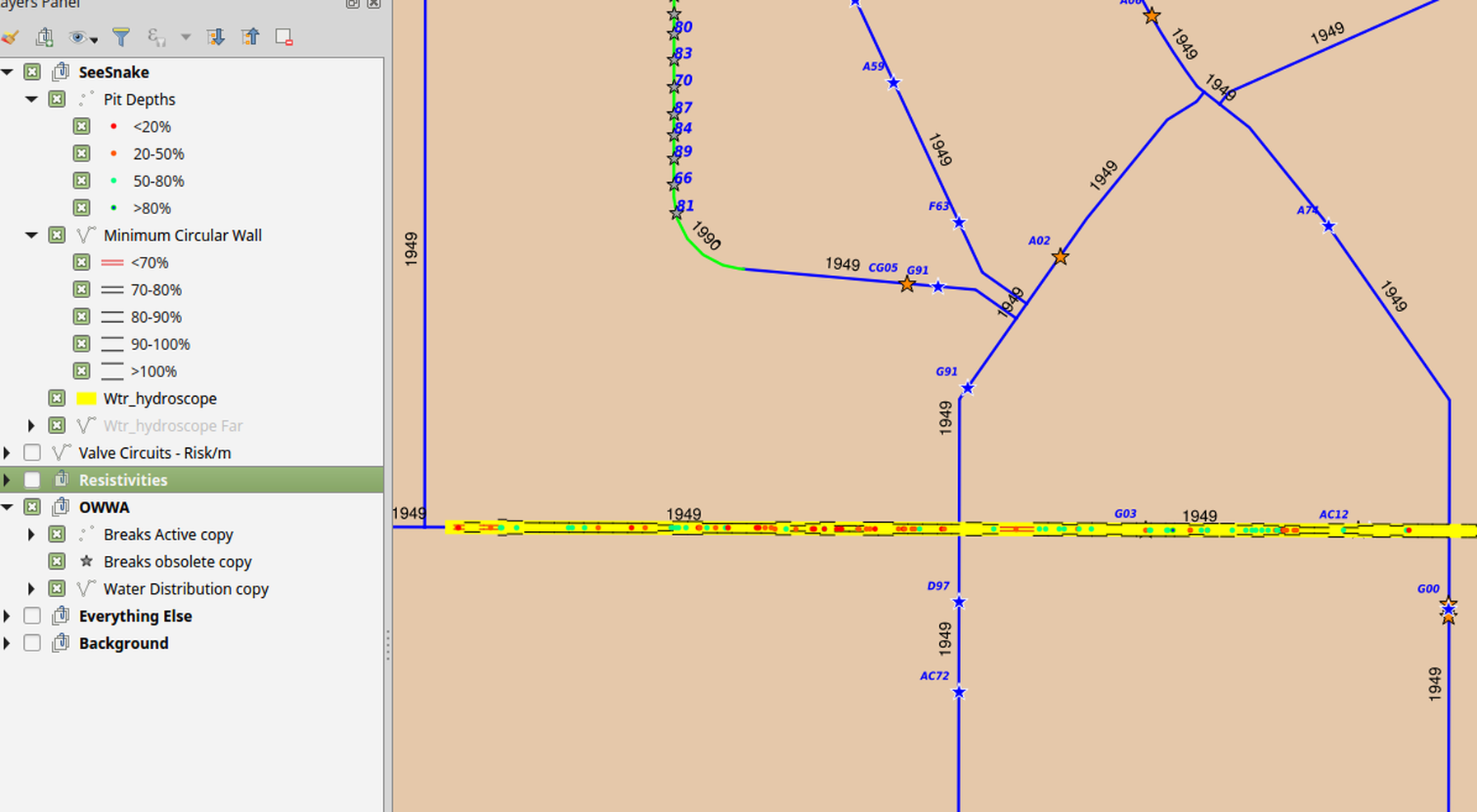


| Index & Notes |

|

Clustered in Space and Time with SeeSnake below
This neighbourhood not only gave me two replaced cluster cases, it also shows one that will happen in another several years or so.
This slide turns on the layer for the PICA SeeSnake, the inspection tool that gave us both the minimum wall thickness and the three deepest pits for each pipe length. Where the parallel lines are closer, the wall is thinner, with 70% remaining wall thickness a circular break waiting to happen - and the dots are the pits. Red dots are deep pits with less than 20% wall left, the green dots shallow pits.
With inspection data, you don't need to wait for several breaks to roughly infer where the corrosion clusters are; you can just see them. The bunch of red dots is several main breaks waiting to happen, if we let them. Since there's just the one cluster, we'll be able to do an opportunistic cut-in about ten metres long when the first main break gives us an excuse to dig in the cluster; anodes at either end, and this main may last to the late 21st century. I gambled and won, spending 10% of the replacement cost on an inspection, when the main had zero breaks; those nearby clusters had me wondering if there were more coming in the area, and sure enough, I found one. Joanna Line, my replacement, will spend another 20% of the cost of replacement on it soon enough, replacing maybe 30 metres, and we'll have still saved 70% to spend somewhere else.
© Roy Brander, P.Eng 2016